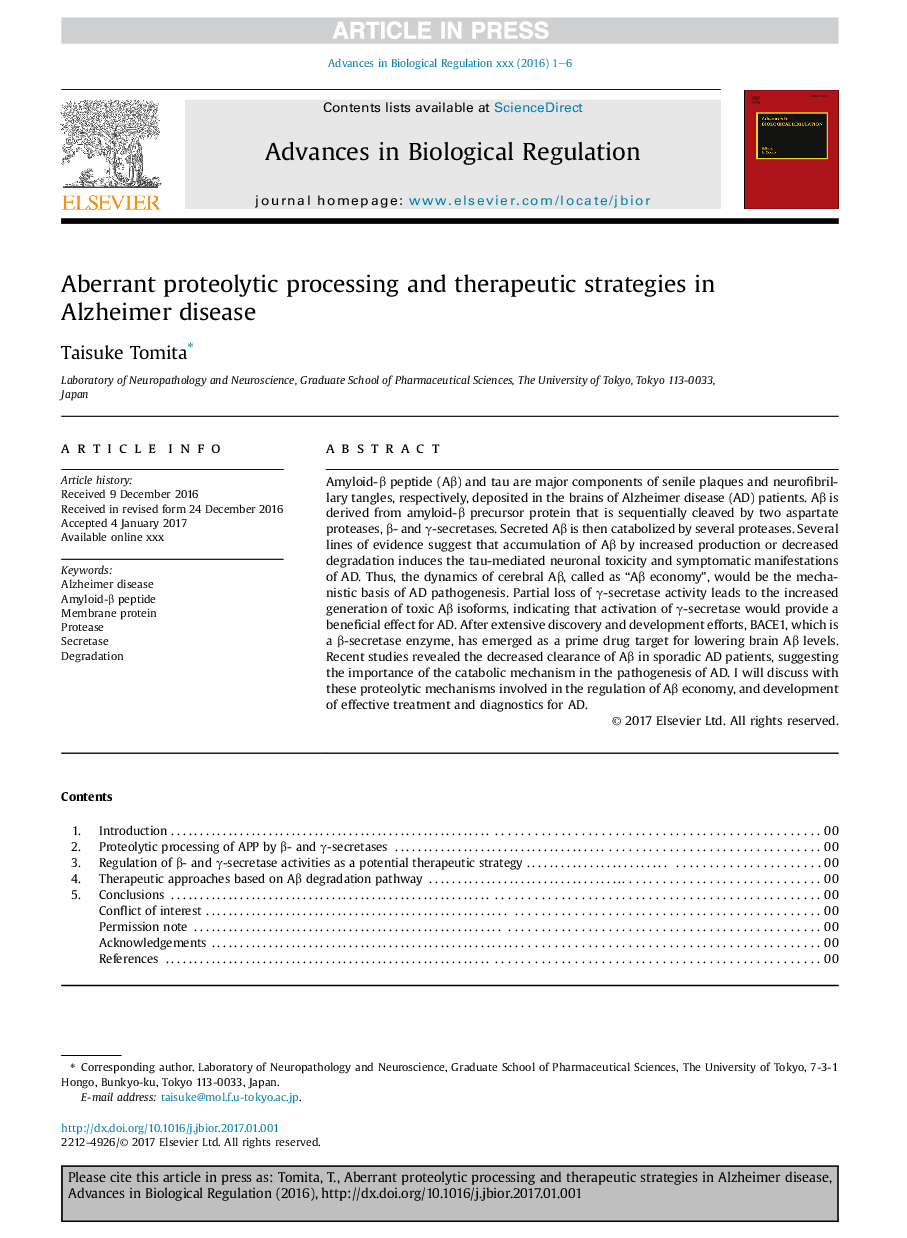| کد مقاله | کد نشریه | سال انتشار | مقاله انگلیسی | نسخه تمام متن |
|---|---|---|---|---|
| 5504263 | 1535867 | 2017 | 6 صفحه PDF | دانلود رایگان |
عنوان انگلیسی مقاله ISI
Aberrant proteolytic processing and therapeutic strategies in Alzheimer disease
ترجمه فارسی عنوان
پردازش پروتئولیتیک بی نظیر و استراتژی های درمانی در بیماری آلزایمر
دانلود مقاله + سفارش ترجمه
دانلود مقاله ISI انگلیسی
رایگان برای ایرانیان
کلمات کلیدی
بیماری آلزایمر، پپتید آمیلئید-²²، پروتئین غشاء، پروتئاز، دبیرستان تنزل،
موضوعات مرتبط
علوم زیستی و بیوفناوری
بیوشیمی، ژنتیک و زیست شناسی مولکولی
زیست شیمی
چکیده انگلیسی
Amyloid-β peptide (Aβ) and tau are major components of senile plaques and neurofibrillary tangles, respectively, deposited in the brains of Alzheimer disease (AD) patients. Aβ is derived from amyloid-β precursor protein that is sequentially cleaved by two aspartate proteases, β- and γ-secretases. Secreted Aβ is then catabolized by several proteases. Several lines of evidence suggest that accumulation of Aβ by increased production or decreased degradation induces the tau-mediated neuronal toxicity and symptomatic manifestations of AD. Thus, the dynamics of cerebral Aβ, called as “Aβ economy”, would be the mechanistic basis of AD pathogenesis. Partial loss of γ-secretase activity leads to the increased generation of toxic Aβ isoforms, indicating that activation of γ-secretase would provide a beneficial effect for AD. After extensive discovery and development efforts, BACE1, which is a β-secretase enzyme, has emerged as a prime drug target for lowering brain Aβ levels. Recent studies revealed the decreased clearance of Aβ in sporadic AD patients, suggesting the importance of the catabolic mechanism in the pathogenesis of AD. I will discuss with these proteolytic mechanisms involved in the regulation of Aβ economy, and development of effective treatment and diagnostics for AD.
ناشر
Database: Elsevier - ScienceDirect (ساینس دایرکت)
Journal: Advances in Biological Regulation - Volume 64, May 2017, Pages 33-38
Journal: Advances in Biological Regulation - Volume 64, May 2017, Pages 33-38
نویسندگان
Taisuke Tomita,
